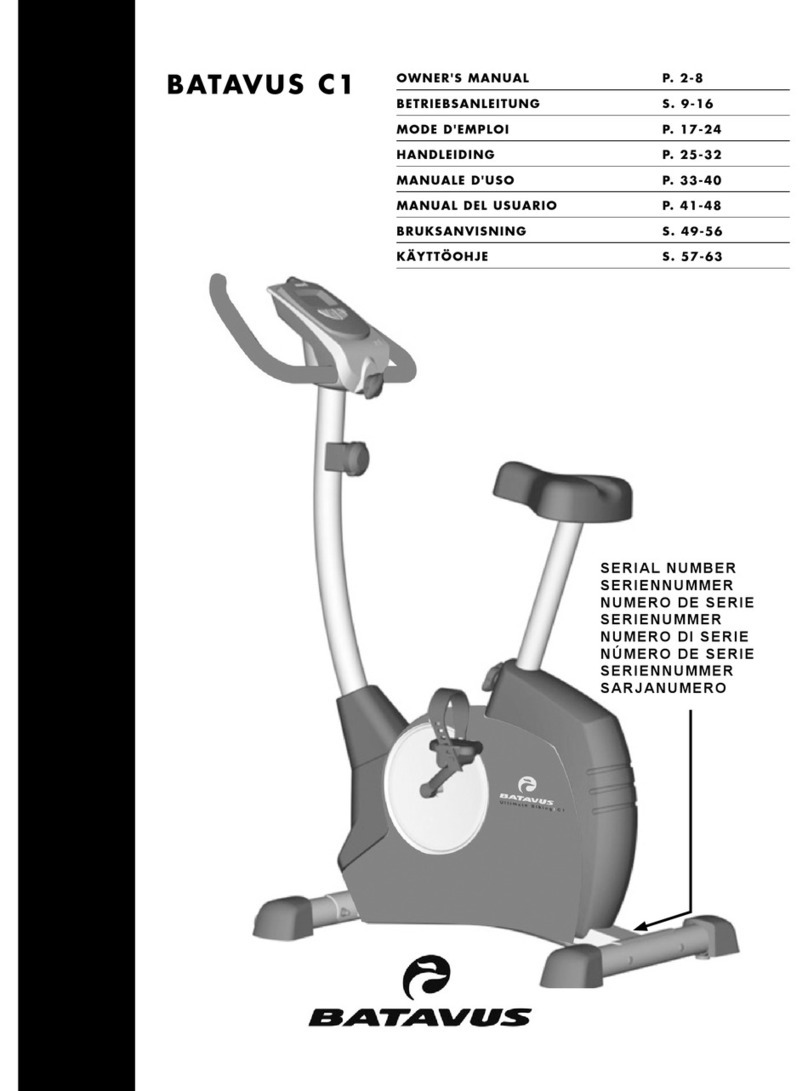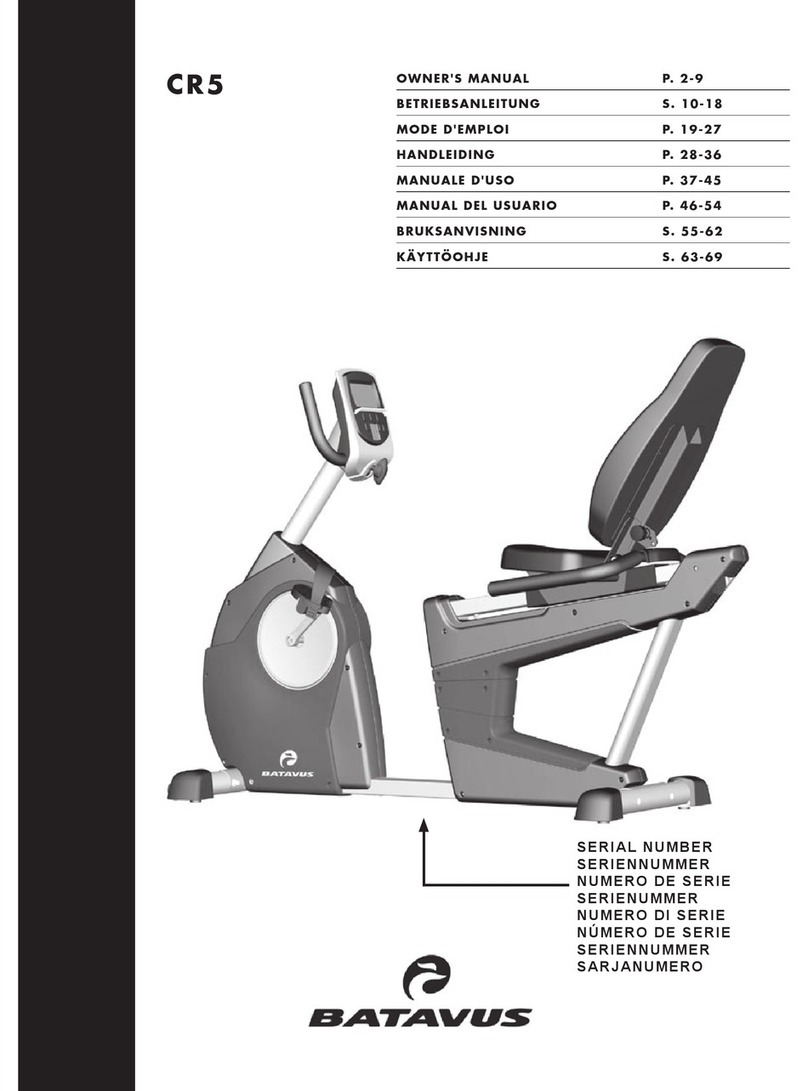6
OWNER'S MANUAL •B A T AV U S C 3
efficiency can be measured by monitoring the
pulse. The pulse meter helps you monitor your
pulse easily
during exercise, and thus to ensure that the exercise
is sufficiently effective but not overstrenuous.
HEART RATE
No matter what your goal, you’ll get the best
results by training at the right level of effort, and
the best measure is your own heart rate.
First find your maximum heart rate i.e. where the
rate doesn’t increase with added effort. C3’s meter
calculates your approximate maximum pulse level
using the following formula:
220 – AGE
The maximum varies from person to person. The
maximum heart-rate diminishes on average by one
point per year. If you belong to a risk group, ask
a doctor to measure your maximum heart rate for
you.
We have defined three different heart-rate zones to
help you with targeted training.
BEGINNER •50-60 % of maximum heart-rate.
Also suitable for weight-watchers, convalescents
and those who haven’t exercised for a long time.
Three sessions a week of at least a half-hour each
is recommended. Regular exercise considerably
improves beginners’ respiratory and circulatory
performance and you will quickly feel your
improvement.
TRAINER •60-70 % of maximum heart-rate.
Perfect for improving and maintaining fitness.
Even reasonable effort develops the heart and lungs
effectively, training for a minimum of 30 minutes
at least three times a week. To improve your
condition still further, increase either frequency or
effort, but not both at the same time!
ACTIVE TRAINER •70-80 % of maximum heart-
rate.
Exercise at this level suits only the fittest and
presupposes long-endurance workouts.
•The heart rate is measured in three ways:
A) Using the handgrip heart rate sensors
B) Using an ear clip with cable (available as an
optional extra)
C) Using a chest strap (wireless, telemetric),
optional
The chest strap and receiver/adapter are available as
optional extras.
Do not use more than one measuring system at the
same time.
MEASURING PULSE WITH HAND SENSORS
C3 measures pulse with sensors which are located
in the hand supports and which measure the
pulse each time the user touches both sensors
simultaneously.
For reliable pulse measurement, the skin must be
in continuous contact with the sensors and the
skin in contact with the sensors should be slightly
moist. Too dry or too moist skin will impair hand
pulse measurement. Please note also that active
use of the upper body muscles during exercise may
interfere with hand pulse measurement: active
muscles transmit similar electronic signals as the
heart muscle. Therefore, we recommend that arms
be kept relaxed during pulse measurement.
EAR PULSE MEASUREMENT
1. Fit the ear sensor wire plug into the connecting
point of the meter.
2. Attach the ear sensor to the earlobe.
If the sensor does not immediately start measuring
your pulse or if the earlobe is cold, rub the
earlobe with the fingers to speed up circulation.
Physiological differences between different people
may also cause disturbances in pulse measurement.
In these cases, try measuring on the inside
surface of the ear or on the tip of your finger. If
measuring disturbances appear while training,
test the functioning of the sensor while stationary.
Strong, unintentional swaying while training
may also disturb measurement. If pulse values
rise above 150 beats/min., earlobe measurement
may be affected by the speeding up of circulation.
Sometimes a strong light source, e.g. a fluorescent
tube, in the immediate vicinity of the user may
cause disturbances in pulse measurement. In this
case, test the functioning of the sensor by turning
the ear sensor the other way round on the earlobe.
Pulse reading can also be affected, if the battery
power of the meter is too low. Clean the ear sensor
after use with a damp cloth.
TELEMETRIC HEART RATE MEASUREMENT
This equipment has a built in pulse receiver, which
is C3atible with a telemetric Batavus Pro Check
pulse transmitter.
NOTE! If you are fitted with a pacemaker, please
consult a physician before using a wireless heart
rate monitor.































